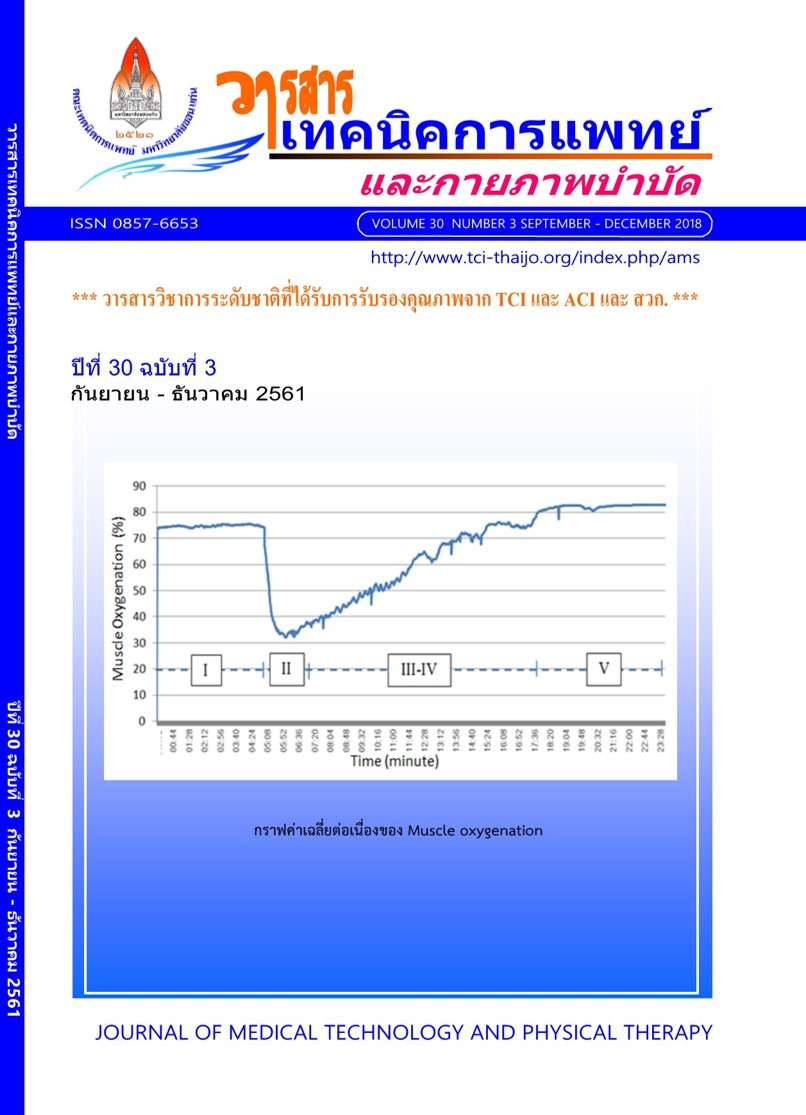The preparation of standard samples for interlaboratory proficiency testing of hCG pregnancy test kit in medical network
Main Article Content
Abstract
The external quality assessment scheme for urine hCG pregnancy test has been provided in several countries. However, this service is insufficient in Thailand. Therefore, most of laboratories have to perform interlaboratory comparisons in the area using in-house quality control. The preparation of quality control product for these comparisons must be accurate according to the standards that must be homogenous and stable. The aim of this study was to evaluate the quality of the prepared standard samples of urine pregnancy test kit in terms of homogeneity, stability based on the requirement of ISO 13528:2005. To evaluate interlaboratory performance for urine pregnancy test kit in Udon Thani medical laboratory network using the prepared standard samples. The standard sample from known urine concentration of hCG level, which range 0 to 11,480 mIU/ml, was prepared. In-house control products were packaged in bottles and randomly assessed homogeneity and stability both quantitatively and qualitatively. After that the standard sample was distributed to participant’s laboratory to evaluate interlaboratory performance. Laboratory analytical performance of the hCG pregnancy test kit was assessed 2 round testing with 3 samples per round in a network of 20 volunteer medical laboratories and 3 reference laboratories. The homogeneity and stability of the test product was determined in each round. The result showed that quantitative homogeneity of two test set products was assessed. The coefficients of variance were 2.29% and 4.24% in the first round, 25.83% and 22.27% in the second round. Qualitative homogeneity tests were consistent for all tests. Quantitative stability of the test products was assessed for 7 days. The coefficients of variance were 1.89% and 13.18% in the first round, 21.0% and 2.34% in the second round. However, the qualitative stability assessments were corresponding result for every test. In addition, 1000 mg/dL of glucose, 8 mg/dL of hemoglobin, and 2.67 mg/dL of bilirubin had no impact on quality of urine hCG pregnancy test kit. The laboratory analytical performance of medical laboratory network with two round assessments, three samples in each round, had the good test results of 84.1% and 68.1%, respectively, the acceptance test results of 15.9% and 31.9%, respectively, and no unacceptable test result in each round. This study indicates that the standard samples are appropriate for use in quality assessment by interlaboratory comparisons for urine hCG pregnancy test kit and could be used as a model for quality assessment in medical laboratory network.


